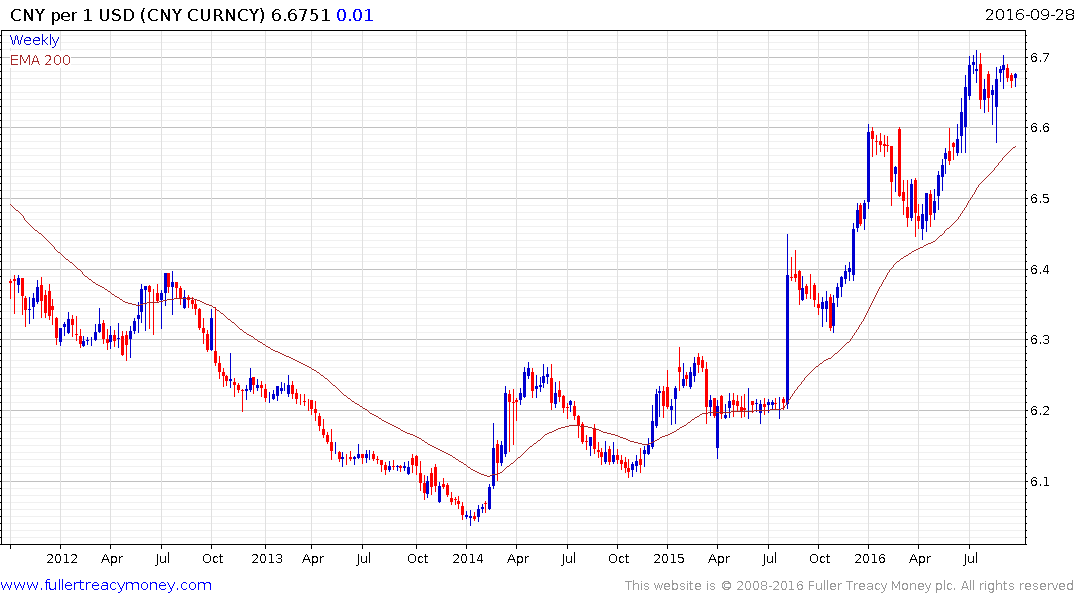China's Ambitious Plan to Make the Yuan the World's Go-To Currency
This article by Robin Ganguly and Cedric Sam for Bloomberg may be of interest to subscribers. Here is a section:
The world will only play along if China leaves the yuan alone
One of the basic definitions of a reserve currency is that it must be freely traded. And the yuan is not quite there yet. The People’s Bank of China is often suspected of intervening in the market to nudge its exchange rate one way or the other. The central bank also limits onshore daily moves to 2 percent on either side of a fixing that it sets. Then there are capital controls, which restrict the ability to move money out of the country.
Despite this, people have found ways to move money out to escape yuan depreciation pressures and a volatile stock market. An estimated $1 trillion has flowed out of China since September 2015.
The Federal Reserve Bank of Dallas suggested in July that the yuan failed a safe-haven test, finding that China’s currency underperforms as market volatility increases.
SDR inclusion is likely to prompt the Chinese government to push ahead with reforms to its
exchange-rate policy, as part of its efforts to bolster international usage of the currency. But challenging the dollar’s hegemony will take more than a while, with the memory of the shock August 2015 devaluation relatively fresh in investor minds. The greenback has maintained its dominance since the mid-20th century, fighting off competition from the yen and the euro.After the IMF in 2010 rejected China’s request to include the yuan in the SDR basket, the nation took several steps to support its claim. It made the yuan’s fixing more market-based, allowed greater access to its bond market and closed the gap between the currency’s rates at home and abroad. In November last year, the IMF deemed that the yuan was freely tradable enough to become a global reserve currency.
In the long run, a stronger yuan could be a much-needed fix for the global economy as it would increase the purchasing power of China, the biggest consumer of commodities in the world.
I find it interesting that this article assumes the Chinese Yuan is likely to become stronger as reforms are instituted and the currency gains access to the IMF’s Special Drawing Rights. There is another way of thinking about the development.
China is in the midst of a major transition and most of the risk associated with the move is held inside China where the government and banking sector are at risk from a disorderly resolution to the bad debts problem as well as the repercussions to employment of rationalising the materials and infrastructure sectors. To ease that transition China needs a weaker currency.
Gaining reserve currency status for the Yuan helps to internationalise the currency. That eases the way for China to market bonds internationally, which would succeed in achieving the twin goals of reducing borrowing costs and diversifying risk.

The Dollar remains in a consistent medium-term uptrend against the Yuan and a sustained move below the trend mean would be required to question that view.
Back to top


